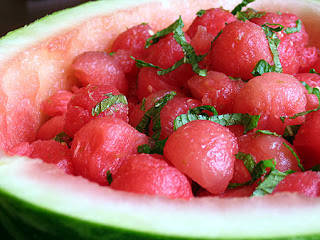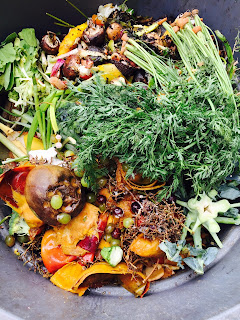On flushing and dining out.
TGIF. Friday is the breath of fresh air everyone loves in anticipation for the weekend. Closing lids on laptops in exchange for clicking glasses at happy hour are sweet sounds of any Friday repertoire.
TGIF. Friday is the breath of fresh air everyone loves in anticipation for the weekend. Closing lids on laptops in exchange for clicking glasses at happy hour are sweet sounds of any Friday repertoire.
This week, I've logged the two most common questions I’ve received: “how
do you go to the bathroom?” and “how do you dine out?”.
On flushing, I have been able to
quickly answer with my 4-square rule and pending bidet installation. But digging
into the numbers, there is a world of information devoted to “flushing forests”
with an acute focus on America's obsession with toilet paper use compared to
the rest of the world. In 2014, the world per capita consumption of toilet
paper was reported at an average of 8.3 pounds per
person per year. However, the American per capita consumption was at the highest
end of the range at 50.7 pounds of
toilet paper used per person per year. That’s about 57 sheets per day at a cost of about $74 per year on paper just to wipe
our bums. For contrast, Sub-Saharan African countries sit at the lowest end of
the spectrum at 0.9 pounds per person. This disparity made me realize just how
thoughtless and consumptive we can be with our toilet paper usage.
 |
| Don't hate me, I love felines. |
Toilet paper rolls, after all, are trees. The production of toilet paper accounts for 15% of the world’s deforestation. The World Wildlife Fund converted our global toilet paper usage to trees flushed to awaken people to the damage associated with our rolling obsession: 270,000 trees are flushed or dumped in landfills every day.
Since I know the bidet is an extreme option for most, the second
best and most practical solution is increased thoughtfulness. Next time you visit Johnny (Nanny Labruto joke),
consider limiting your squares. You’ll directly contribute positively towards some
of the world's grand challenges.
On dining out, it is seldom you’ll find me sitting at home on a Friday night given the endlessness of New York’s diverse eating options. I love using Friday nights as a way to catch up with friends over a good taco (or five) and some music.
This Friday, one of my best friends came in to the city for the day, so we took a walk after work. In the 90 degree heat, we opted for a great waste-free treat (total waste-free life hack here): ice cream in a cone. We specified no napkin and no paper around our cone, and we were served a top-to-bottom eatable treat.
In the evening, I headed out for an evening at Rockwood Music Hall for a show with friends and then to the Taqueria on St. Marks (cactus tacos for the win). As I explained my waste-free mission to my friends, they quickly helped me come up with solutions to ensure every step of our Friday night was waste-free:
Attitude: First and foremost, eating and drinking out waste-free requires a healthy dose of gusto that I’ve had to cultivate over the week. Share your ambitions with your friends, waiter, or bartender. Inform them that you are going waste-free upfront before you place your order so that they understand your goal. You will be surprised with how supportive everyone will be in reducing your waste to zero. They deal with a ton of waste every minute, so your request will often be greeted with refreshing support.
Food to go: If you are at a bagel shop or getting food to go, ask for your item (i.e. bagel, sandwich, wrap) to be served on a real plate, even if it is to-go. Bring your handkerchief, and transfer your food over from the plate to your hankie to go waste-free.
Sit-down dining: Use context clues around you to check out food on other tables to figure out how your meal will be served. When you place your order, clarify if any paper will be served with your meal (trust me, waiters and waitresses have heard worse requests). Tacos, for example, are often served in reusable red plastic bins with paper underneath. Instead, ask for your meal on a real plate or hand over your clean hankie instead of using paper in the tray. You will help chip away at the downstream waste produced by restaurants. The average sit-down restaurant in America produces 410 pounds of waste per day.
Food: Order appropriately to limit food waste. 49 million pounds of food waste are produced annually from full service restaurants in America that went straight to the landfill. If you are the type of person that typically doesn’t finish your meal, consider bringing along this collapsible and washable doggie bag called the FlatOut container that can easily be thrown in your purse or backpack.
At a bar: At bars, simply ask the bartender or server for your drink without a napkin, straw, or fruit rind. That has covered all of my bases. If you are going to grab a beer, ask for a beer on tap and save a bottle.
Coffee: Get your reusable tumbler or on-the-go mug...now! Coffee and plastic cups are major waste offenders (per Day 1: 2.5 million plastic cups are thrown away every hour in America).
Dining out waste-free is totally do-able. That said, the
gratification of making your meal waste-free is hard to beat. More reason for
me to hop up and water the garden!
Total daily waste: two fruit stickers (plums are irresistibly
in season)
Up next: traveling waste-free.




































